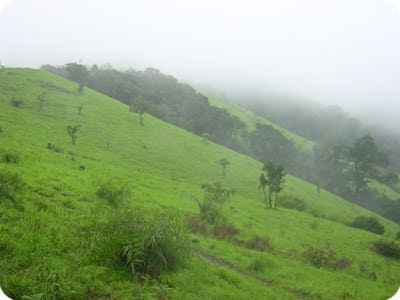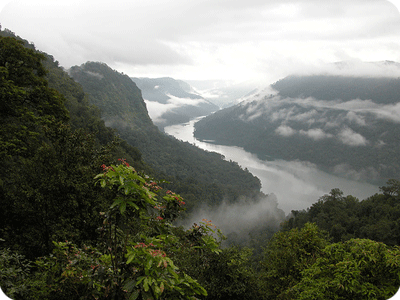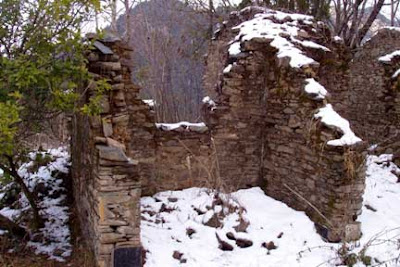
Ootacamund is a popular hill station located in the Nilgiri Hills of Tamil Nadu, India. Udhagamandalam is the official Tamil name for the town. Ooty stands at an approximate height of 9,080 feet (2,268 m) above sea level.
Nestled in the brilliant green hills of the Nilgiris, its one of the favourite summer retreats of people in South India or the whole of
India. Orchards of peaches and plums, terraced tea plantations, and eucalyptus, pine and wattle lining the landscape… a typical hill station in many ways. Founded by the British in the early part of the 19th century, Ooty was home to many Britishers who have fallen in love with this hill station where they discovered a little bit of England.such as beautiful English rain. The British influence is visible in the handrolled cigars, chocolate and cheese one enjoys here.
A hill station with a landscape perpetually enveloped in mist, Ooty's beauty has a timeless a

ppeal.
History of ooty
Udhagamandalam, The "Queen of hill station" is one of the best tourist resorts. Nilgiris is called as "Blue Mountains". he name Nilgiri was due to the blue haze which envelopes the range with most distant hills of considerable size.
Places To Visit in OOTY
Government Botanical Garden This garden was laid out earlier by Marquis of Tweedale, the then governor of Madras in 1847. This garden covers an area of 22 acres. A fossil tree trunk of 20 million years is preserved here. The flora of the garden consist of varieties of tree species, grass carpet, variety of ferns, fashioned beds laid beds laid out in an Italian style, multi coloured flowering plants, house ferns and orchids and nurseries.
Lake View
At about one kilometer distance, an artificial lake can be seen with a charming look, which was formed in 1824 by Mr. John Sullivan,the then Collector of Coimbatore. Tamil Nadu tourism Development Corporation provided the following facilities to the tourists.
Mini Garden
Tourists can visit this mini garden which is on the way to the Boat House. The children amusement park is housed here.
Doddabetta
It is the highest peak (2623 meters) in the Nilgiris and is about 10 Kms from Ooty. It lies at the junction of the Western & Eastern Ghats and offer beautiful vistas of the Nilgiri Hill ranges. It is
surrounded by dense sholas. One can have a panoramic view of the landscape
The Mukkurthi Peak & National Park
Mukkurthi Peak is about 40 Kms. form Ooty. The Mukkurthi National Park is located on the Southern corner of the Nilgiris Plateau. The area contains a viable population of Nilgiri Thar (Hamitragus hilocrius). The Kollaribetta and Nilgiris Peak are other major peaks around. The
area is chained by many beautiful and perennial little streams which fall into Bhavani Puzha. The Silent Vally in the Western Ghat is located on the Western side of these ranges. A fascinating feature of the Mukkurthi Sanctuary is its endemism and relationship with Himalayan Flora and fauna.
Hindustan Photo Films
The HPF, one of the major industrial units ot the district, is a public sector enterprise. This unit is located (about 5 Km away from Ooty railway station) over a sprawling area of over 300 acres, near the Ooty golf-links on the Ooty- Mysore road. The HPF was inaugurated by Mrs. Indra Gandhi, Prime Minister, in January, 1967. This industrial unit is currently producing Indu roll films which are used for taking photographs; Indu X-ray films, the quality of which is acknowledged to be among the best in the world; Indu bromide paper on which photographs are printed; and Induaerographic for geological and defence mapping, industrial X - ray film, laser recording film, CAT film, special film for space photography, oscilloscope direct print paper, photo typesetting paper and range of chemicals for the film processing.
Mudumalai Wildlife Sanctuary
This Sanctuary lies at an elevation of 1140 metres in the junction point of Kerala, Karnataka and Tamil Nadu. It however, extends over an area of 321 sq.kms. A variety of habitats ranging from tropical ever green forest, moist teak forest, secondary grass lands and swamps are found. The fauna is varied with Minivets, Hornbills, Fairy Blue Birds, Jungle Fowls, Panther, Sambar, spotted Deer, Barking Deer, Wild boar, Porcupine etc.
Ferhill Palace
Fernhill Palace was the erstwhile summer residence of the Maharaja of Mysore. The first Fernhills bungalow was built in 1844.
Pykara
It is situated about 21 kms from Ooty, on the Ooty-Mysore Road. The tourist attraction are well protected fenced sholas, Toda settlements, undisturbed grassy meadows and also a good wildlife habitat.The Pykara Dam,Pykara falls and the reservoir attracts many tourists.There is a forest Rest House at Pykara. a boat House with Restaurant is available.
Deer Park
It is located at a distance of one Km. on lake road which has Sambar, Chital and Hares besides water birds.
THE NARROW TRAIL
This is a journey nobody should miss. A journey where you jostle with unimaginable crowds and squeeze into tiny coaches, a journey where you feel you can actually reach out and touch the elusive Nilgiris. It starts at Mettupalayam, 46 km southeast of Ooty, where you board the Blue Mountain Express that gets pushed by an engine instead of being pulled! This is a precious travel tip. But once you are on, it' s heaven. The overpowering Nilgiri landscape has the ability to make you oblivious of the human ocean around you and the greenery is bliss. It' s a memorable 4. 5-hour journey, so don' t miss it for anything.
Climate of Ooty
Temperatures range from 25°C in summers to 5°C in the winters.
When to Go to Ooty
Between November and March, avoiding high-season crowds (April-June and September-October).
Wildlife of Ooty-
The region is a treasure of wildlife with some animals even native to these southern mountain ranges. There is that deep-voiced Nilgiri langur (Presbytis johnii) with its shiny black body and yellow-brown crown. The Nilgiri langur happens to be one of the five langur species found in
India and Sri Lanka. These langurs of the Nilgiris are often found in the sholas, which are amongst their favourite haunts. It' s in the sholas that you can also see the lion-tailed macaque.
The shy, timid and hard-to-spot Nilgiri tahr (Hemitragus hylocrius) also has its home in these blue mountains. This animal has pride of place in being the only wild goat to inhabit any region south of the Himalayas. It has a short coat, dark yellow brown in color, and prefers to inhabit craggy regions above forest level. The Nilgiris are home to a great variety of carnivorous animals like tigers, panthers, jackals and hyenas. Elephants, wildcats, civet cats, giant squirrels
and mongoose are also part of Nilgiri fauna. The Nilgiri marten, nightjar, hill mynah, and golden oriole are some of the region' s avifauna. In essence, this range of mountains harbors a massive
diversity of animal life.
Ways to Reach to Ooty-
By Air Coimbatore, 105 km from Ooty, is the nearest airport. Indian Airlines has flight to Coimbatore from Bangalore, Cochin and Madras.
By Train The Blue Mountain Express to Ooty is from Mettupalayam (47 km). Mettupalayam can be reached from Coimbatore by the Tea Garden Express.
All important towns of Tamilnadu, Kerala and Karnataka are connected to Ooty.














